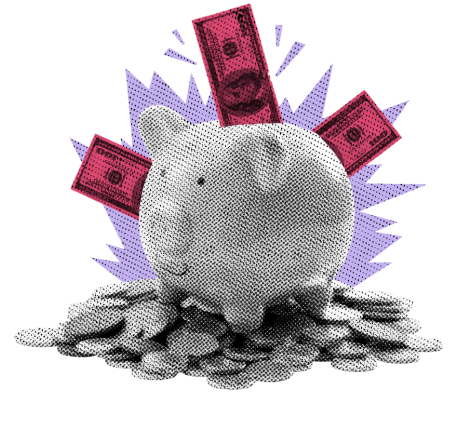MY HOT TAKES
-
The 15% tariff is now the new “normal”--and the market seems surprisingly okay with it
-
Not all companies can raise prices–some will just take the hit
-
This is a live-fire test of elasticity economics in real time
-
Tariffs don’t just hit countries, they hit companies, sectors, and specific SKUs
-
Porsche drivers won’t flinch at $10k more–but Prius buyers sure might, make sure you know the difference
-
You can quote me: “Trade deals may look good on the red carpet, but the real work–for investors–starts after the photos are taken.”
Another day, another deal. A few years back–well a few more than a few years–I was an ardent amateur triathlete. Seriously, don’t let the bowtie fool you, I was quite competitive and I owe my success to the same discipline that I apply to my work. Triathlons are arduous! You start with a nearly 1 mile open water swim… open as in the ocean–waves, sharks and all. Then there is a 25 mile bike race, and finally a 10k run. It all seems straight forward in 2 sentences, but I can tell you that while you are in it, it seems like a lifetime, though it only lasts about 2 ½ hours. There is so much intense training leading up to a race that most triathletes go into an almost autopilot trance to make it through. It is true, and most races feel like a blur… … until that last ¼ mile of the run. That is the part of the course which is beautifully adorned with the colorful advertisements, the spectators, your family, AND THE PHOTOGRAPHERS. The chute (the red carpet)!
I would like to say that it has been a long drawn out race in trade negotiations to get us here, but it really wasn’t. Though the President was quite clear in his campaign that tariffs would be a cornerstone of his trade policy overhaul, it seems to have been missed by many, perhaps written off as campaign rhetoric. So, let’s just start the clock on the Monday after the President was inaugurated. It was on that day, just 1 business day in, that President Trump announced his first tariffs–let’s call it the 21st, a Tuesday. We are 189 days in, and we are just days away from the President’s deadline for negotiations with… well, everyone.
Some countries received letters–special attention, if you like–while others will just be assigned a tariff unless better offers come in. To date, framework deals have been struck with China, UK, Vietnam, Japan, and, as of this weekend, the EU. Some of those deals come with more specifics than others. The two most recent, Japan and the EU, come with a bit more specifics. The prior, are still being filled in. China, most notably is only a temporary understanding with a 90-day tariff truce. Negotiators are currently in a new round of discussion in Stockholm this week. More on that in a minute.
The EU announcement that greeted traders yesterday morning was somewhat of a surprise. Not as much that a deal was reached, but more that the deal was so straightforward and that it appeared to be accepted by the EU leadership, oh and the 15% thing. That 15% appears to be the new baseline number as it was the same agreed upon with Japan. My regular followers know that I have been quite public in my belief that the President was targeting 15% for some time, but the market was still kind of working off of a 10% baseline. Or, was it? Based on the market's reactions to the newly hiked number, it would seem that it may have already been baked in, so to speak. Or, it could be that markets are relieved that the number wasn’t higher and in line with the “liberation day” numbers. Either way, 15% is the new normal, and markets seem to have taken it well… for now.
An interesting discussion has emerged around that 15% number when it comes to auto imports, and I want to delve into that for a moment this morning. When putting pencil to paper, analysts in the wake of the Japanese announcements, realized that Japanese-made autos (like the Toyota Prius, manufactured in Japan) would have lower tariffs than US autos and their complex supply chains which can include as much as a 25% tariff. On paper at least, US companies are disadvantaged, so it is likely that at some point, the issue will have to be resolved in one way or another.
A big question still remains: SO WHAT? What will a 15% tariff charged on foreign-manufactured cars actually do? Well, theoretically, importers will seek cheaper options in order to avoid the 15% margin hit. They will either seek to manufacture in a domicile with <15% tariffs, or simply move manufacturing to the US, in order to save on tariffs altogether. That is, of course, what the administration would like. Sounds great in theory. Now, I am sure that I don’t have to tell you that, even if a company wanted to shift to the US for manufacturing, it would not happen overnight and it would require a great deal of capital to do so. It is therefore, fair to say that importing a car from Japan or the EU will cost 15% more. In other words, that sought-after onshoring of manufacturing is not going to happen any time soon. That leaves a company with really 2 near term alternatives. Either accept the margin hit, or raise prices to consumers.
It is the latter that is vexing the Fed which starts its 2-day FOMC meeting today. It is concerned that tariffed manufacturers will pass tariff costs on to consumers causing inflation. It will, no doubt, but will it be enough to move the needle, or, more importantly, will it persist? The former alternative, take the margin hit, is at front and center for investors, especially during earnings season. If companies eat the new costs, margins and earnings are likely to be affected, which will ultimately be reflected in the company’s stock price. It’s all about earnings, folks–well, mostly.
Let’s take a step back. If you ask any economist what a firm would do when faced with an additional cost, they would shoot back an answer like, “firms are rational, and they will pass the cost on to the consumer.” Firms are rational, indeed. But is there some rationale that would cause a firm not to raise prices and absorb the cost hike? There is.
Remember, it’s all about the trade-off. If the company raises prices to maintain margins, it risks losing a customer. That risk however varies amongst product classes and the products themselves. Let’s stick to autos. As mentioned before, the Toyota Prius will now be subject to a 15% import tariff. What will happen if Toyota raises the retail price to offset the tax? Well, there are substitutes. US-made hybrids like the Toyota Corolla Hybrid (Blue Springs, Mississippi), Honda Accord Hybrid (Marysville, Ohio), or the Chevy Bolt (Orion, Michigan) are reasonable substitutes that will not be subject to the price increase, so Toyota is likely to lose some business (unless buyers go for its own Corolla, which actually has the same drivetrain as the Prius). Because of this, Toyota–if it is rational–will be hesitant to pass costs on to consumers. The affordable, mid-size, efficient hybrid market is said to be elastic, meaning buyers would substitute alternatives easily based on changes in prices. Visualize this with a flattish demand curve.
Jumping to yesterday’s news of EU tariffs, we see a contrasting example. Companies that will be affected include Volkswagen Group, BMW, and Mercedes-Benz. VW sells, amongst others, the Porsche brand. Porsche’s top seller in the US is its compact luxury SUV the Macan. What would happen if the company passed the tariff on to consumers, jacking its $65k price by 15% to almost $75k? Well, it will surely upset consumers, but will they seek substitutes similar to Prius buyers? Are there even any US-manufactured substitutes? Does the Jeep Grand Cherokee, Lincoln Nautilus, or Chevy Blazer count? Not really. What this means is that Porsche is under less pressure to eat the cost increase. It can pass all or most of the tax on to consumers without fear of losing the customer. They have pricing power. Demand for this product is said to be inelastic, where changes in price only have minimal impacts on changes in quantities demanded. This can be visualized with a steeper, more vertical demand curve.
Now, I have, as economists do, abstracted two scenarios in order to demonstrate elasticity of demand and how tariffs may or may not affect either the consumer’s budget or the corporation's profits. The real world is far more complex, but the logic holds up. Tariffs on more commoditized goods that have lots of substitutes will likely be absorbed by the sellers, while tariffs on unique, more luxury-type items with few substitutes, are likely to be passed on to the consumer. You can apply this basic analysis to virtually all products that will be subject to newly agreed upon import tariffs.
Competing in a triathlon is messy business. Riding a bike and then running a 10k in the same shorts that you just swam a mile in, all in the summer sun, puts one in a less-than-flattering situation. Many competitors expose as much skin as possible to keep cool and minimize chafing, that is, until they get to the chute. Most of us at that point straighten everything out, wipe off sweat in a squeegee-like maneuver, smile, and lengthen our stride. Today, many years hence, all I have as a memory of my many years as a triathlete, is lots of arthritis, and… pictures of me in the chute looking completely on top of my game. Getting these deals done and inked is just the beginning. While everything looks nice and put together in the pictures, investors have to now get down to business and figure out how all of this will ultimately play out. The real work starts now. Get out the calculators and don’t take anything at face value.
YESTERDAY’S MARKETS
Stocks had a mixed close with marginal gains yesterday in response to an EU trade deal. Discussions quickly went to the potential for a similar Chinese deal which gave a boost to tech shares. Ultimately markets responded to the EU deal with a ‘meh’--it was already mostly factored in.


.png)

